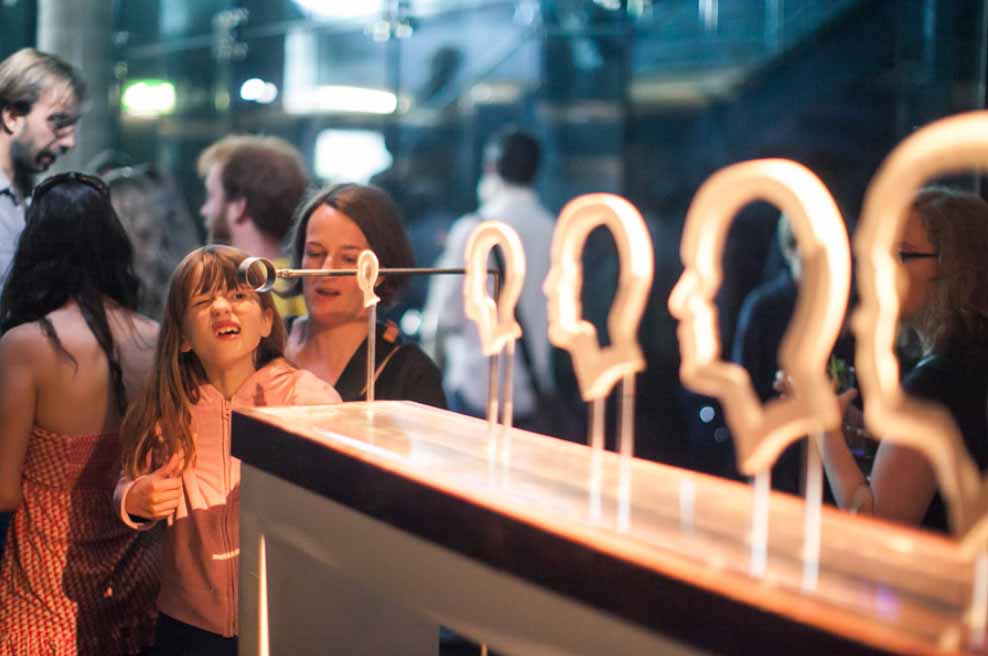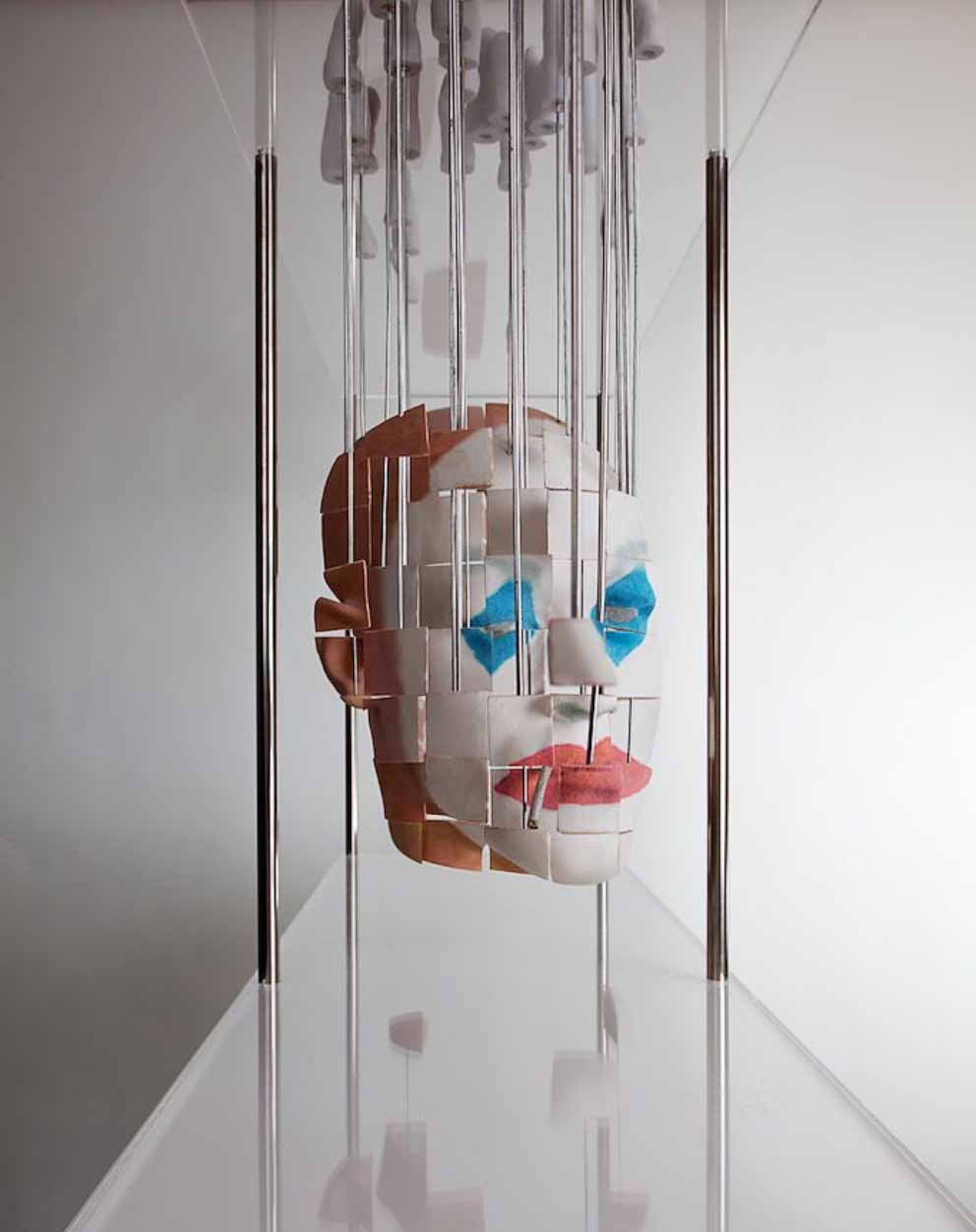Nano Interview with Jonty Hurwitz
Based on an interview with Popular Science Magazine, January 2015
Where did the idea come from?
Where do any ideas come from? I’m the kind of person that likes to challenge the status quo in my creative life. The individual that inspired me for this particular work is the Ukrainian polymath Nikolay Siadristy. In around 2009 I was working on a huge risk technology project with a team of data scientists in Kiev. For this team of focused engineers my outlandish “art” approach to scientific work was somewhat of a novelty so they kindly found the time in our crazy schedule to take me to the Siadistry exhibition for some inspiration. I was transformed.
For several years following that exhibition I kept finding myself excited by the idea of "tininess" and being scientifically oriented I couldn’t help but keep my peripheral vision honed on developments in the nanotech world. In mid-2014 I attended a lecture by Yehiam Prior from the Weizmann Institute in London. Again, inspired - I reached out to Prof. Prior and began exploring the art of the possible in the field. And so it began….
At the same time, I had been through a very difficult time of my life after and found myself wrapped in the arms and soul of Yifat my first love from 25 years ago… after circumstance parted us in our teens. This magical circular relationship drew me to the love story of Cupid and Psyche. Much to my surprise I found that many artists over the course of history had approached the story.
The final piece in this artistic puzzle is that my art dealer in London has been asking me for some time now to start thinking about scale. The art world is much more narrow than it likes to think and large scale work is often seen as a kind of right of passage for artists.
So how did the idea and the science come together
For me the essence of Cupid and Psyche is the “legend” itself. It talks of Gods and magic and impossible feats. The creation of a series of sculptures so small as to be invisible to the human eye seemed to bring a beautifully poetic touch to the rigid science of nanotech. Not only are Cupid and Psyche in themselves a myth, but to some extent this series of sculptures themselves take on mythical proportions. One could even take it deeper into the almost mythical nature of the Quantum physics of two-photo lithography.
Ultimately though, even in their presence of these sculptures, they “do not exist” according to the information your unaided senses provide. The science and the art came together in a beautiful dance of essence vs engineering. Absolute vs legend. Science vs Myth.
How did the team come together?
The team came together through sheer will on my part. Team-building is a real passion of mine - having spent many years in finance, technology and art, I’ve come to deeply understand that working with truly talented innovators is the key to success. So how does one find innovators? Certainly not by searching for “innovator” on linkedin. The synthesis of art and science is a wonderful area to be in really. In the seemingly dry world of engineering it doesn’t take much to convince hard-core scientists to have a bit of fun… they need it! And the offer of getting involved in an art project generally brings sparkles to engineer eyes (as long as the art project has a justifiable and mathematically sound essence). So attracting great minds is relatively easy. Art has a magical charm about it. If anything it gives the scientists something to talk about over dinner that for once can actually excite their friends and family.
In my case, many in the team, particularly on the 3D clay part of the project have been with me on many creative journeys. I've built a dream team over the years. Of course there is the shining new entrant, Stefan Hengsbach from Karlsruhe…well he was just a wonderful blast of energy who took to this project like a duck to water. It was his pure enthusiasm that made this project come to life. I hear now from Stefan that it has actually lead to a new piece of research being created. We struggled with the arms as the load mean that the fabrication process was glitching out at the extremities. Stefan tells me that he is putting together a new paper now on micro scaffolding structures - inspired by his foray into the art world. Yehiam from Weitzmann was also a great source of inspiration, keeping me focused and informed along the way. He was the one that ultimately set me on the two-photon lithography road. A true scientist with that little extra dash of imagination that makes him special. Then there is the post production team. The other universities that photographed the ant and the needle using their own talented SEM teams. To some extent this series of sculptures reminds me of how the film industry works. You need large teams of thinkers, builders, creatives and amazing technology (the sculpting software we used, zBrush, is one of the main monster-making tools in the Holywood special effects world :-) Please do reference the credits page on my website where everyone is thanked for the contribution. They deserve the mention. http://www.jontyhurwitz.com/nano-credits/
What does the process look like?
Here’s a good online interview to watch: https://www.youtube.com/watch?v=elIAt6BGvzY
Here’s a good article on the art and science: http://3dprint.com/24892/nanosculpture-jonty-hurwitz/
There are no rules as to what the process could look like for the creation of this kind of work. In my case I wanted to ensure that the model of Yifat had a human purity and essence about it. Whilst the world of 3D modelling is amazing, it still lacks a raw humanity. The signs of humanity are in the small postural anomalies, the twitches and glitches and bumps and lumps. We all have them and they just can’t be modelled algorithmically (yet). So to make this happen I started by finding an expert in the extremely cool new area in 3D called photogrammetry (http://en.wikipedia.org/wiki/Photogrammetry). Of course the concept of photographic measurement has been around since the birth of photography but its only in recent years that the processing power and algorithmic development have been around to make this a reality. The beauty of this technique was that it allowed me to capture a moment of absolute reality in 3 Dimensions. Whilst other scanning techniques do exist, their downfall is the amount of time the capture takes. Photogrammetry is instant, a snap in time. A tru 3 dimensional photograph.
The next phase of the project was the cleaning and re-imagining of the models we generated from the photogrammetry studio. The downside of this technique is that the caputured data is very noisy. I needed to transform Yifat and I into characters of legend without compromising on reality. This took a great deal of time and care. It required several special 3D sculpting and engineering skills to achieve that balance. Actually this is one area where I still love getting my hands dirty. A bit like a director just lifting the camera. I just love it and find that there’s an aspect of the 3D modelling process that I can only communicate by doing. Here I personally put in a huge amount of “screen” time but am also super grateful to the engineers and sculptors that put in huge effort.
From the point that the models were in principle ready for production, and Stefan and his team at KIT kicked in. The first phase of the project we did on test models that I had generated - the aim of this phase was to understand the kinds of resolution we could achieve and how the dance between the fabrication technology and the models worked. Without getting too detailed here, it was a question of how to find a balance between resolution and scale. The final “sculptures” could have been much much smaller but it would have been at the expense of beauty and detail.
Several iterations of model production ensued until we finally settled on what we felt was acceptable. We had to place some real time limitations on ourselves as there were budgetary constraints.
Once we had final sculptures created, the post-production phase started. Not good enough just to have a bunch of invisible dust particles on a mirror. The myth now needed to be give some kudos. The emperor needed to be convinced that he was in fact wearing clothes. The post production phase involved various Scanning Electron Microscopes and their operators. Essentially photographers of the nano world and their tools. The early shots were wonderful but when I shared them with friends and colleagues the missing link was actually how to communicate the actual scale. Frankly in a photograph these sculptures could have been at human scale. I got back to Stefan asking if the pieces could be re-shot with a human hair in the frame. They tried and failed and so I went on the hunt for paradigms that would convey the scale. Turning back to some of the works of Nikolay Siadristy that forever changed me. Two in particular. His rose in a human hair and his “LITANY OF CAMELS WITH THE PYRAMIDE” in the eye of a needle. In the same way as I had give some historical respect to the 18th-century sculptor Canova Psyche by basing the work on “Psyche Revived by Cupid's Kiss” (on display in the Louvre in Paris), I gave Siadistry the credit he desearved using the hair and needle metaphor. In the art world, these kinds of historical references are an equivalent to citations in the academic world. They are an important acknowledgement of the shoulders of the giants you stand upon. Anyway after a great deal research I found the reference images needed produced by Aalborg University (Ant Image) and The Aberystwyth University of Wales, Bioimaging Laboratory (Needle image) and then worked with a great post production team to create images, films etc.
I could go on an on…finally it all came together here. Www.art.ninja/nano
The final twist in the myth is important to mention too I.e. That the pieces were destroyed only days before they were published on the internet. So at the time that they went viral (rough estimate of 25 million views in a few days), they no longer actually existed.
What happens next
I would love to put together an exhibition of the real pieces in the coming year. To bring together the technology, and the logistics to allow people all over the world to come and “question” the myth of cupid and psyche with their own eyes. I am currently open to discussing corporate sponsorships to make this amazing educational project happen. I want to inspire young scientists and engineers, to show that creativity is at the core of good science.
Where is multi photon lithography going and how does it work?
Here’s a good video on two-photon Lithography asking those questions: http://youtu.be/nCOI2pu_9BE






























